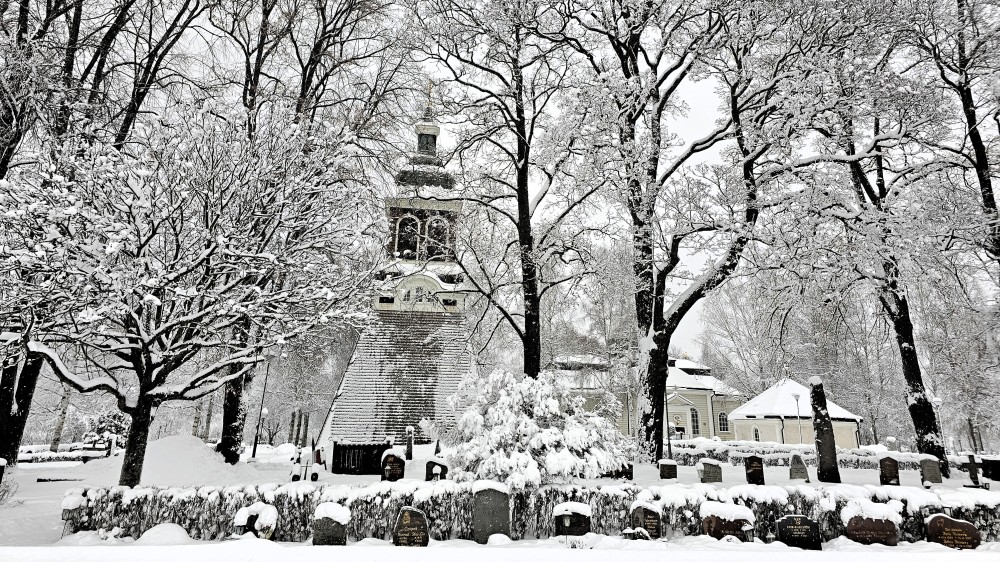Kristina Socanski Celik touched upon the relationship between creativity and spirituality in her PhD defense earlier today. She has written a dissertation about the music of two 20th-century composers, Arvo Pärt and Ljubica Marić, who have used ancient religious chants in their modern compositions. The relationship between creativity, spirituality, and religion surfaced several times during the disputation. This was particularly because both composers have a spiritual approach to their compositions, while only one (Pärt) is religious. These discussions made me think about how spirituality relates to creativity. I have been interested in creativity for some time but have not considered its relationship to spirituality. Hence, I am writing this blog post to sort my thoughts.
Creativity
I have previously written about how creativity is a term that “everybody” knows but nobody manages to define. My working definition of creativity is that is the ability to create something that is both novel and meaningful. In psychology, creativity is seen as a stable human trait; some people are consistently more creative than others. While creativity is key to artistic endeavors, it is also crucial in scientific, technological, and everyday problem-solving contexts.
The key to creativity is the ability to combine divergent and convergent thinking. It relates to coming up with many new ideas (divergent thinking) but also choosing the best ones (convergent thinking). The latter part is often the most challenging and depends on many factors. Yet, some people are consistently better at creating new things that have value. But how does that relate to spirituality?
Spirituality
Spirituality can be equally difficult to define as creativity. Merriam-Webster has a quite Christian-centric definition:
something that in ecclesiastical law belongs to the church or to a cleric as such
Cambridge Dictionary has a broader definition, yet it focuses on religion:
the quality that involves deep feelings and beliefs of a religious nature, rather than the physical parts of life
However, there are also broader definitions suggesting that spirituality is “native to anyone, whether they are religious or not” and that spiritual experiences can be had both within and outside of religious contexts. It is not limited to any specific belief system but includes a broad range of practices and experiences that foster a sense of inner peace, interconnectedness, and personal growth.
Academically, spirituality is studied through various lenses, including psychology, sociology, theology, and philosophy. Search research focuses on what makes meaning beyond the material aspects of life. It involves a sense of self-reflection and a search for understanding one’s place in the universe.
Spirituality can be considered a human trait in that it represents a characteristic or quality many people possess. It often involves traits like self-reflection, empathy, and a sense of interconnectedness with others and the world. Spirituality can manifest in various ways, including through religious practices, meditation, a sense of connection to nature, or a commitment to personal values and ethics.
Creativity and Spirituality
While searching for research on the relationships between creativity and spirituality, I came across many interesting things:
Creativity and spirituality in indigenous cultures: Soriano de Alencar et al. (2016) explored connections between spirituality and creativity in indigenous communities. With examples from Brazil, they discuss how rich imagination and elements from the indigenous contribute to creative expression. It can also lead to enhanced spiritual intelligence, a parallel concept to intelligence quotient (IQ) and emotional intelligence (EI) that refers to the ability to apply spiritual principles and values to enhance one’s life and interactions with others.
Enhancing coping mechanisms: Corry et al. (2013) suggest that creativity and spirituality are closely linked, with both contributing to enhanced coping mechanisms. Individuals who engage in creative activities often experience a sense of flow and mindfulness, which can be deeply spiritual.
Nurturing creativity through spirituality in the workplace: Pathak (2012) has found that a spiritually enriched workplace culture can lead to improved creativity among employees. They also refer to examples from ancient Indian mythology to emphasize that creativity and spirituality are the tools for personal as well as organizational growth. By integrating spiritual practices such as mindfulness and meditation, organizations can create a culture that supports innovative thinking and holistic well-being.
Spirituality and creativity in education: Goodliff (2013) emphasizes that when educators recognize and nurture the spiritual aspects of creativity, they can foster a more holistic and enriching educational environment. This approach encourages children to explore their inner worlds and express themselves more freely, leading to greater personal and academic growth.
Mental health and personal empowerment: Mayo (2009) explores how imagination, creativity, and spirituality are connected and their role in healing. It highlights the work of Marion Milner, a psychoanalyst, painter, and mystic, focusing on her ideas about creativity, mysticism, and mental health.
Buckenham (2011) argues how creativity and spirituality are “two threads of the same cloth” and how they can empower marginalized groups by offering them a means of self-expression.
So far, I have only skimmed through all this material and saved it to my Zotero library for further processing. As I have begun searching for these things, I see that lots of more interesting references are popping up. However, that will have to wait for another day.
Conclusion
Thanks to Kristina’s PhD defence, got a chance to increase my view on creativity from the lens of spirituality. As shown in my brief literature review above, a growing body of research argues that creativity and spirituality enrich both aspects of our lives. Creativity is a way of expressing our inner selves and finding healing, while spirituality can be seen as providing the inspiration, resilience, and mindfulness that fuel such creative endeavors.
